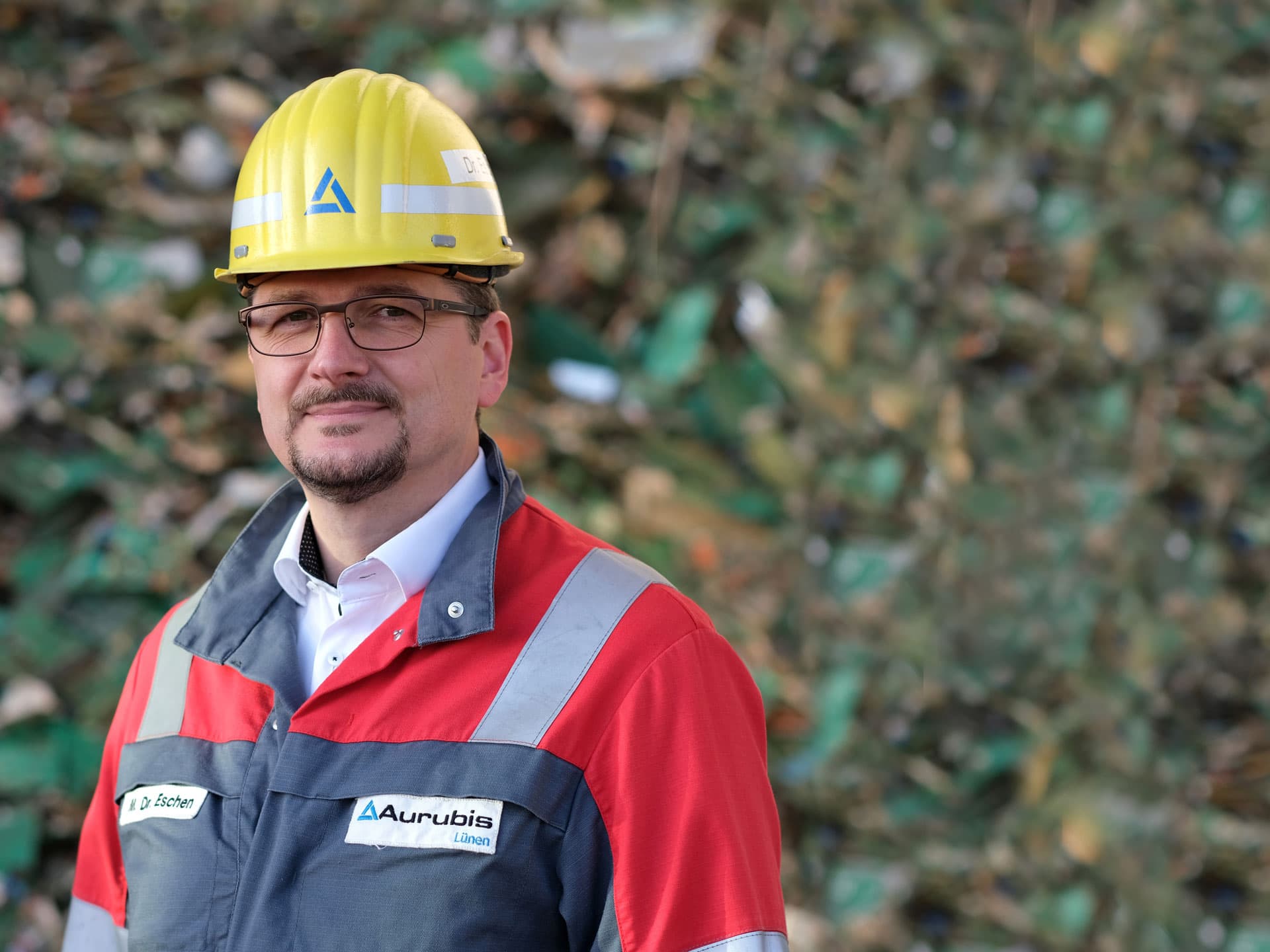Research & Development
"Lithium-ion batteries are more electrical scrap than battery"
What will be the scrap of tomorrow? Dr. Marcus Eschen, recycling expert in the Research & Development department, tackles this and other questions. An interview about challenges in recycling, lithium-ion batteries, and why he’s on the lookout for the unusual.
DR. ESCHEN, WHAT DOES THE RECYCLING OF THE FUTURE LOOK LIKE?
Eschen: We’re dealing with more and more complexity, especially in the recycling of electrical scrap, so the number of metals is rising. But because products have to be increasingly efficient, everything’s becoming smaller as well – including the metal components. We’ve experienced this trend for years, and it will continue. As a result, it’s becoming increasingly important to recover even the metals that are only present in small concentrations. Tantalum, a base metal needed for building capacitors, is a good example. Currently, it oxidizes in the recycling process, so it ends up in the slags and we lose it. In a research project, we’re currently working on ways to remove tantalum before the melting process. This could be interesting for other metals such as gallium and indium as well. So innovative solutions are more in demand than ever.

The proportion of plastic in electrical scrap is growing, while the proportion of metal is falling. What does that mean for Aurubis?
Eschen: For one, we have to process larger and larger raw material volumes to recover the same amount of metal. This confronts us with multiple challenges: separating the plastic from the electrical scrap will become more important than it already is. We have to work on the existing systems and improve detection rates.
At the same time, however, there’s the question of: What do we do with all of the plastic? There are plastic recyclers, but not enough of them for the volumes that accumulate in Europe alone. We’re therefore considering what feasible and efficient solutions could look like – in some cases, together with industrial and research partners. One possible idea is to recover oil from the plastic, which could then ideally be used by the chemical industry, for instance.
Everyone’s talking about recycling lithium-ion batteries. Is that a topic for Aurubis as well?
Eschen: Of course! After all, lithium-ion batteries are actually more electrical scrap than classic battery. Lithium-ion batteries consist of different components that Aurubis can already handle today. At the same time, they would also bring more metals into our smelter network that we’re not quite as involved with yet, such as nickel. However, there haven’t been any reliable volumes for recycling lithium-ion batteries so far. On top of that, there are very different battery systems on the market that aren’t processed the same way and that contain different materials. And they’re changing all the time. As a result, we can’t exactly say what’s in store for us – but we’re preparing for it.

We are increasingly using imaging sensors, for example to further standardize anode casting.
On the topic of Industry 4.0 – what’s going on at Aurubis in this regard?
Eschen: Needless to say, we’re working intensively with the possibilities that sensors and data analysis provide us today. With our current computing power, we’re in a position to implement ideas that seemed a long way off five years ago. This of course only works in connection with the knowledge of our colleagues at the furnace. Collecting data isn’t everything, after all. It’s more about gathering data in a targeted way with a highly efficient set of sensors and then interpreting this data correctly. And interdisciplinary teamwork is key here. We have to bring a variety of skills to the table. This is the only way to improve our process understanding and optimize our process management in the medium term.
Can you name an example?
Eschen: Let’s take the example of the anode. To the untrained eye, all anodes might look the same. But that’s not the case! Every anode has an individual fingerprint since hot copper never flows into the anode mold in exactly the same way. We look at the process for anything that’s unusual because we want standardization. Imaging sensors and comparative analytics now give us the chance to understand what makes a good product. By evaluating the sensor readings of thousands of casting steps, we learn more about the different temperature profiles, for example. Only when we know what happens there specifically can we ask ourselves the question: How can we gradually optimize the casting process? These are the details that ultimately lead to noticeable positive impacts when it comes to our throughput.
